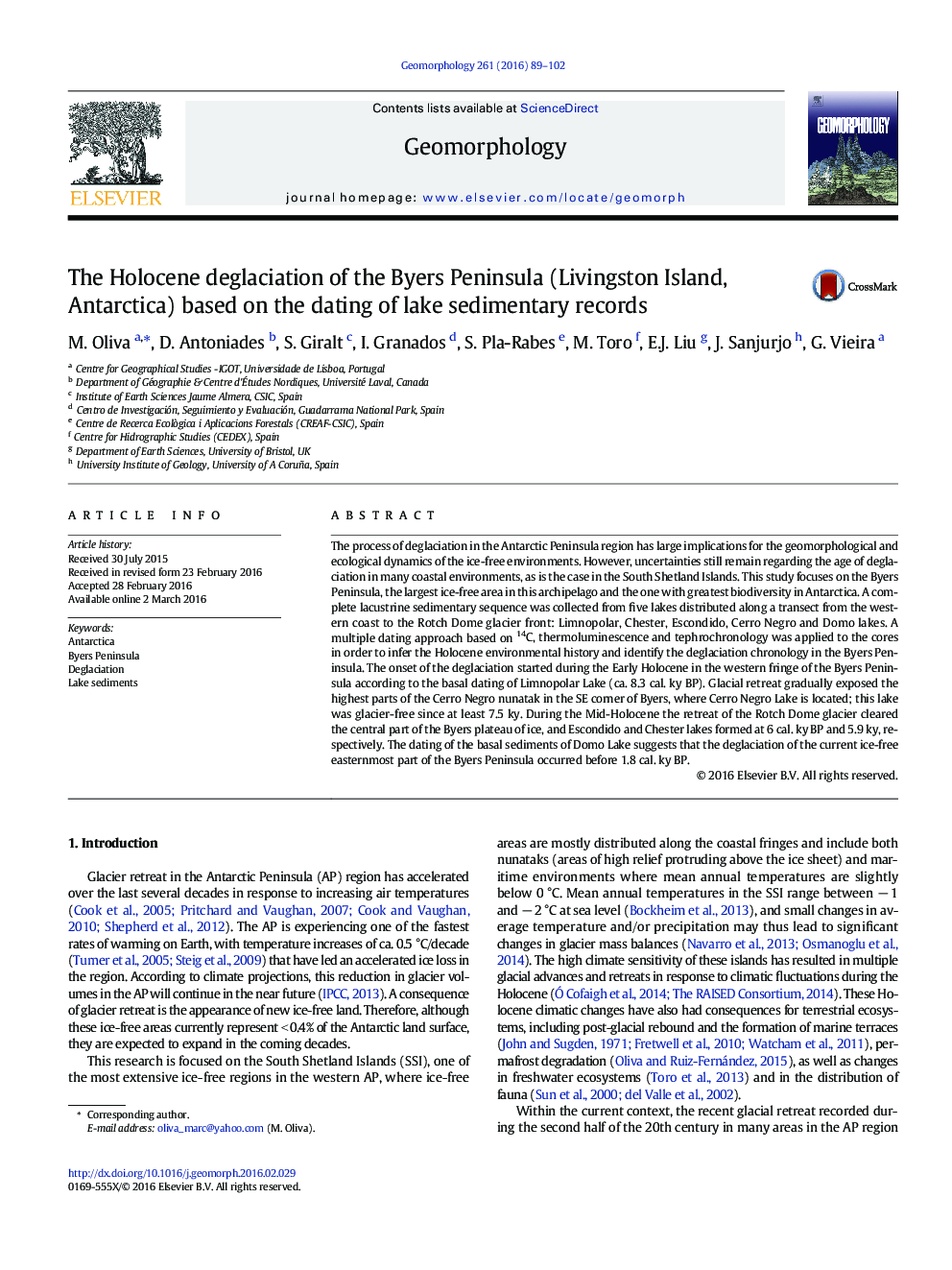| کد مقاله | کد نشریه | سال انتشار | مقاله انگلیسی | نسخه تمام متن |
|---|---|---|---|---|
| 4684049 | 1635388 | 2016 | 14 صفحه PDF | دانلود رایگان |
• We examine lake sediments from five lakes in Byers Peninsula (Antarctica).
• The dating of the basal sediments is indicative of the age of deglaciation.
• The chronological framework has been established with 14C, TL and tephrochronology.
• Deglaciation started in the western part (< 8.3 cal. ky BP) and continued eastwards.
• The central and east became ice-free during the Mid and Late Holocene, respectively.
The process of deglaciation in the Antarctic Peninsula region has large implications for the geomorphological and ecological dynamics of the ice-free environments. However, uncertainties still remain regarding the age of deglaciation in many coastal environments, as is the case in the South Shetland Islands. This study focuses on the Byers Peninsula, the largest ice-free area in this archipelago and the one with greatest biodiversity in Antarctica. A complete lacustrine sedimentary sequence was collected from five lakes distributed along a transect from the western coast to the Rotch Dome glacier front: Limnopolar, Chester, Escondido, Cerro Negro and Domo lakes. A multiple dating approach based on 14C, thermoluminescence and tephrochronology was applied to the cores in order to infer the Holocene environmental history and identify the deglaciation chronology in the Byers Peninsula. The onset of the deglaciation started during the Early Holocene in the western fringe of the Byers Peninsula according to the basal dating of Limnopolar Lake (ca. 8.3 cal. ky BP). Glacial retreat gradually exposed the highest parts of the Cerro Negro nunatak in the SE corner of Byers, where Cerro Negro Lake is located; this lake was glacier-free since at least 7.5 ky. During the Mid-Holocene the retreat of the Rotch Dome glacier cleared the central part of the Byers plateau of ice, and Escondido and Chester lakes formed at 6 cal. ky BP and 5.9 ky, respectively. The dating of the basal sediments of Domo Lake suggests that the deglaciation of the current ice-free easternmost part of the Byers Peninsula occurred before 1.8 cal. ky BP.
Journal: Geomorphology - Volume 261, 15 May 2016, Pages 89–102
